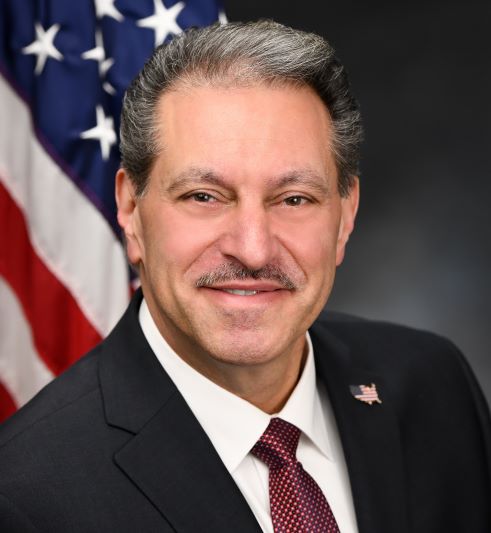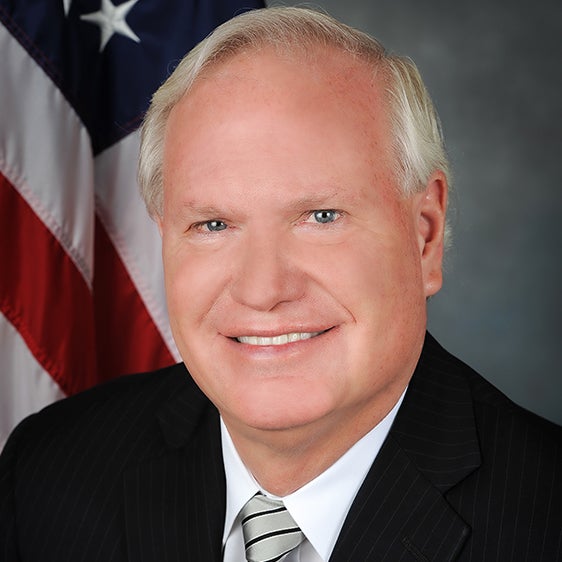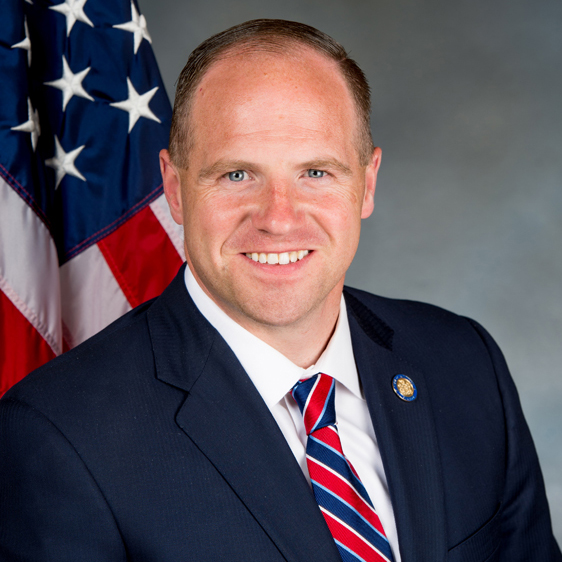| Date of Action |
Assembly Actions -
Lowercase Senate Actions - UPPERCASE |
|---|---|
| Mar 13, 2017 |
notice of committee consideration - requested |
| Jan 27, 2017 |
print number 1998a |
| Jan 27, 2017 |
amend and recommit to codes |
| Jan 11, 2017 |
referred to codes |
Senate Bill S1998A
2017-2018 Legislative Session
Sponsored By
(D, WF) Senate District
Archive: Last Bill Status - In Senate Committee Codes Committee
Actions
Bill Amendments
co-Sponsors
(D) 15th Senate District
(D) Senate District
(D, WF) Senate District
(D) Senate District
2017-S1998 - Details
- Current Committee:
- Senate Codes
- Law Section:
- Criminal Procedure Law
- Laws Affected:
- Amd §§30.30 & 180.85, CP L
- Versions Introduced in 2015-2016 Legislative Session:
-
S5988
2017-S1998 - Sponsor Memo
BILL NUMBER: S1998
TITLE OF BILL :
An act to amend the criminal procedure law, in relation to time limits
for a speedy trial
PURPOSE OR GENERAL IDEA OF BILL :
This bill amends section 30.30 of the Criminal Penal Law to ensure
cases go to trial in a reasonable timeframe.
SUMMARY OF SPECIFIC PROVISIONS :
Section 1: Establishes that this act shall be known as "Kalief's Law"
Section 2: Section 30.30 of the Criminal Procedure Law is amended by:
*Allowing the court, whenever a prosecutor states the people are ready
for trial, to make an inquiry as to the people's actual readiness.
If, after conducting its inquiry, the court determines the people are
not ready, the statement or notice of readiness shall not be valid.
*Requiring a statement of trial readiness be accompanied or preceded
by a certification of good faith compliance with the disclosure
requirements set forth in section 240.20 of the Criminal Procedure
2017-S1998 - Bill Text download pdf
S T A T E O F N E W Y O R K
________________________________________________________________________
1998
2017-2018 Regular Sessions
I N S E N A T E
January 11, 2017
___________
Introduced by Sens. SQUADRON, ADDABBO, AVELLA, BRESLIN, CARLUCCI,
COMRIE, DILAN, GIANARIS, HAMILTON, HOYLMAN, KENNEDY, KLEIN, KRUEGER,
LATIMER, MONTGOMERY, PARKER, PERALTA, PERKINS, PERSAUD, RIVERA,
SANDERS, SERRANO, STAVISKY, VALESKY -- read twice and ordered printed,
and when printed to be committed to the Committee on Codes
AN ACT to amend the criminal procedure law, in relation to time limits
for a speedy trial
THE PEOPLE OF THE STATE OF NEW YORK, REPRESENTED IN SENATE AND ASSEM-
BLY, DO ENACT AS FOLLOWS:
Section 1. This act shall be known and may be cited as "Kalief's law".
§ 2. Section 30.30 of the criminal procedure law, as added by chapter
184 of the laws of 1972, paragraph (a) of subdivision 3 as amended by
chapter 93 of the laws of 2006, paragraph (a) of subdivision 4 as
amended by chapter 558 of the laws of 1982, paragraph (c) of subdivision
4 as amended by chapter 631 of the laws of 1996, paragraph (h) of subdi-
vision 4 as added by chapter 837 of the laws of 1986, paragraph (i) of
subdivision 4 as added by chapter 446 of the laws of 1993, paragraph (j)
of subdivision 4 as added by chapter 222 of the laws of 1994, paragraph
(b) of subdivision 5 as amended by chapter 109 of the laws of 1982,
paragraphs (e) and (f) of subdivision 5 as added by chapter 209 of the
laws of 1990, is amended to read as follows:
§ 30.30 Speedy trial; time limitations.
1. Except as otherwise provided in subdivision [three] FOUR, a motion
made pursuant to paragraph (e) of subdivision one of section 170.30 or
paragraph (g) of subdivision one of section 210.20 must be granted where
the people are not ready for trial within:
(a) six months of the commencement of a criminal action wherein a
defendant is accused of one or more offenses, at least one of which is a
felony;
(b) ninety days of the commencement of a criminal action wherein a
defendant is accused of one or more offenses, at least one of which is a
misdemeanor punishable by a sentence of imprisonment of more than three
months and none of which is a felony;
co-Sponsors
(D) 15th Senate District
(D) Senate District
(D) Senate District
(D) 36th Senate District
2017-S1998A (ACTIVE) - Details
- Current Committee:
- Senate Codes
- Law Section:
- Criminal Procedure Law
- Laws Affected:
- Amd §§30.30 & 180.85, CP L
- Versions Introduced in 2015-2016 Legislative Session:
-
S5988
2017-S1998A (ACTIVE) - Sponsor Memo
BILL NUMBER: S1998A
TITLE OF BILL :
An act to amend the criminal procedure law, in relation to time limits
for a speedy trial
PURPOSE OR GENERAL IDEA OF BILL :
This bill amends section 30.30 of the Criminal Penal Law to ensure
cases go to trial in a reasonable timeframe.
SUMMARY OF SPECIFIC PROVISIONS :
Section 1: Establishes that this act shall be known as "Kalief's Law"
Section 2: Section 30.30 of the Criminal Procedure Law is amended by:
*Allowing the court, whenever a prosecutor states the people are ready
for trial, to make an inquiry as to the people's actual readiness.
If, after conducting its inquiry, the court determines the people are
not ready, the statement or notice of readiness shall not be valid.
*Requiring a statement of trial readiness be accompanied or preceded
by a certification of good faith compliance with the disclosure
requirements set forth in section 240.20 of the Criminal Procedure Law
2017-S1998A (ACTIVE) - Bill Text download pdf
S T A T E O F N E W Y O R K
________________________________________________________________________
1998--A
2017-2018 Regular Sessions
I N S E N A T E
January 11, 2017
___________
Introduced by Sens. SQUADRON, ADDABBO, AVELLA, BRESLIN, CARLUCCI,
COMRIE, DILAN, GIANARIS, HAMILTON, HOYLMAN, KENNEDY, KLEIN, KRUEGER,
LATIMER, MONTGOMERY, PARKER, PERALTA, PERKINS, PERSAUD, RIVERA,
SANDERS, SERRANO, STAVISKY, VALESKY -- read twice and ordered printed,
and when printed to be committed to the Committee on Codes -- commit-
tee discharged, bill amended, ordered reprinted as amended and recom-
mitted to said committee
AN ACT to amend the criminal procedure law, in relation to time limits
for a speedy trial
THE PEOPLE OF THE STATE OF NEW YORK, REPRESENTED IN SENATE AND ASSEM-
BLY, DO ENACT AS FOLLOWS:
Section 1. This act shall be known and may be cited as "Kalief's law".
§ 2. Section 30.30 of the criminal procedure law, as added by chapter
184 of the laws of 1972, paragraph (a) of subdivision 3 as amended by
chapter 93 of the laws of 2006, paragraph (a) of subdivision 4 as
amended by chapter 558 of the laws of 1982, paragraph (c) of subdivision
4 as amended by chapter 631 of the laws of 1996, paragraph (h) of subdi-
vision 4 as added by chapter 837 of the laws of 1986, paragraph (i) of
subdivision 4 as added by chapter 446 of the laws of 1993, paragraph (j)
of subdivision 4 as added by chapter 222 of the laws of 1994, paragraph
(b) of subdivision 5 as amended by chapter 109 of the laws of 1982,
paragraphs (e) and (f) of subdivision 5 as added by chapter 209 of the
laws of 1990, is amended to read as follows:
§ 30.30 Speedy trial; time limitations.
1. Except as otherwise provided in subdivision [three] FOUR, a motion
made pursuant to paragraph (e) of subdivision one of section 170.30 or
paragraph (g) of subdivision one of section 210.20 must be granted where
the people are not ready for trial within:
(a) six months of the commencement of a criminal action wherein a
defendant is accused of one or more offenses, at least one of which is a
felony;
EXPLANATION--Matter in ITALICS (underscored) is new; matter in brackets
[ ] is old law to be omitted.
Comments
Open Legislation is a forum for New York State legislation. All comments are subject to review and community moderation is encouraged.
Comments deemed off-topic, commercial, campaign-related, self-promotional; or that contain profanity, hate or toxic speech; or that link to sites outside of the nysenate.gov domain are not permitted, and will not be published. Attempts to intimidate and silence contributors or deliberately deceive the public, including excessive or extraneous posting/posts, or coordinated activity, are prohibited and may result in the temporary or permanent banning of the user. Comment moderation is generally performed Monday through Friday. By contributing or voting you agree to the Terms of Participation and verify you are over 13.
Create an account. An account allows you to sign petitions with a single click, officially support or oppose key legislation, and follow issues, committees, and bills that matter to you. When you create an account, you agree to this platform's terms of participation.


























